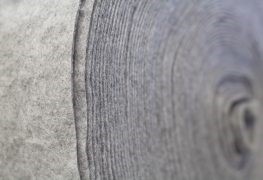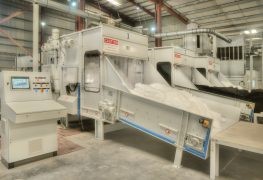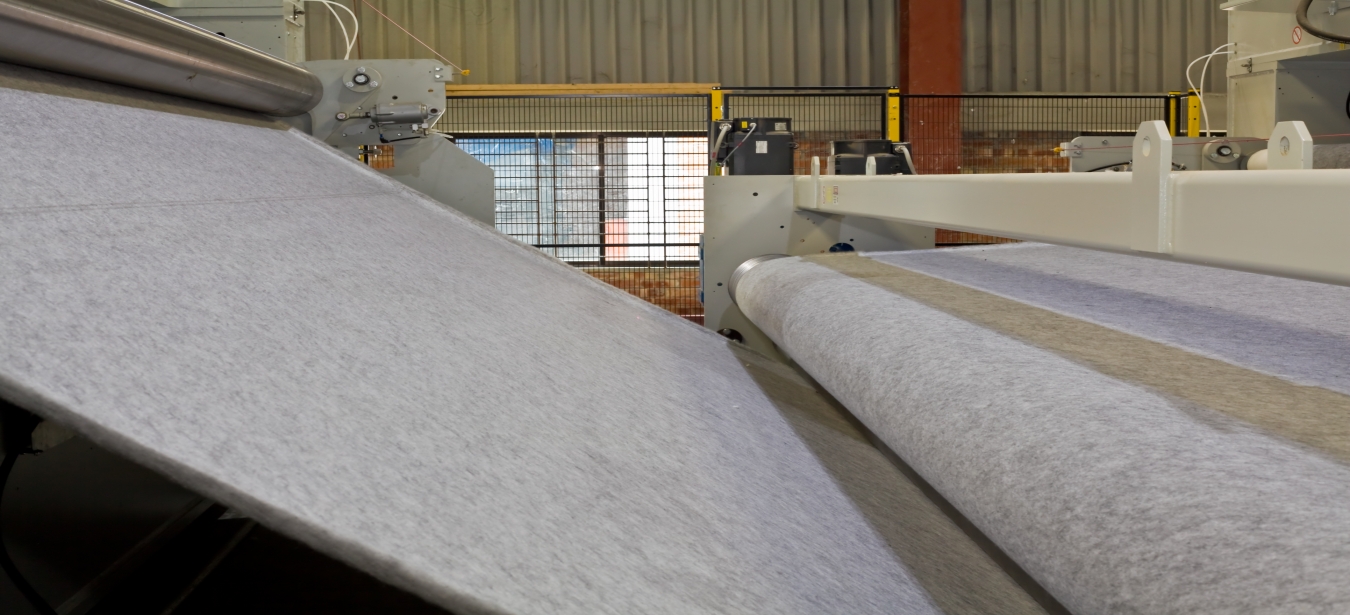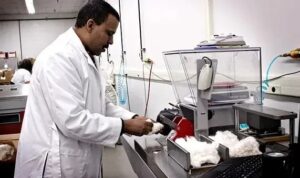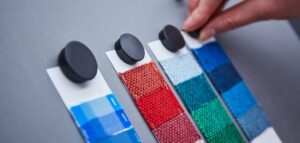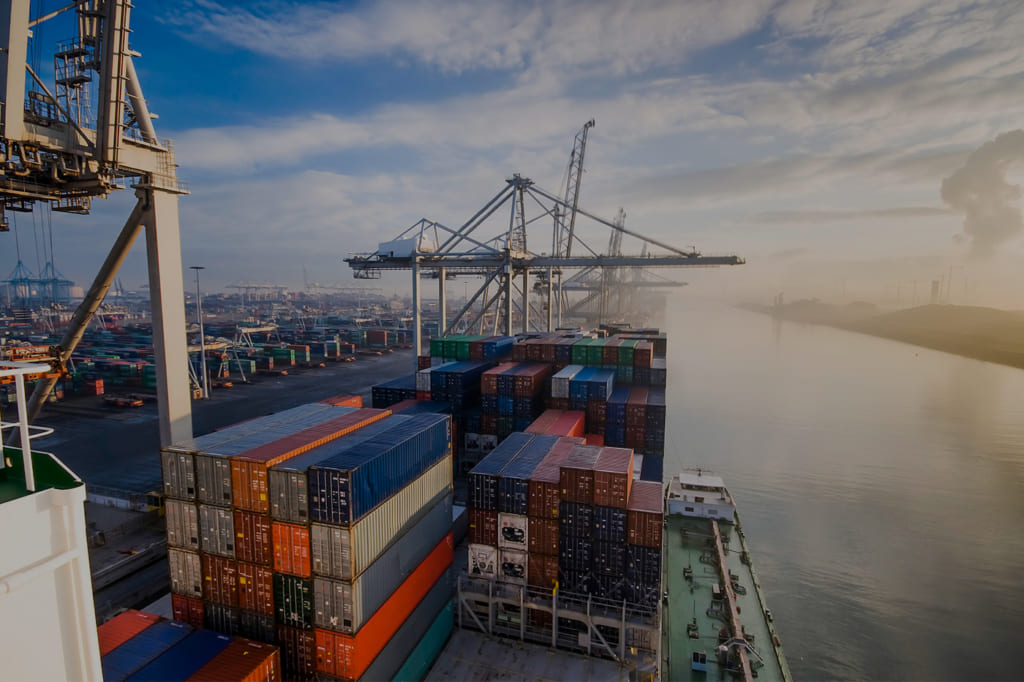What is Geotextile?
There are two kinds of geotextile, the first one is geotextile woven and the second is geotextile non-woven. The difference between woven and non-woven is the method on how to produce it, geotextile woven made with two or more set of thread/filament fiber that weaves to each other while non-woven made by bonding, the interlocking of fibers, or both accomplished by mechanical, chemical, solvent, thermal and combination thereof. In general, geotextile is made from polypropylene (PP) and polyester (PET). In this article, we will write about geotextile non-woven made from polyester with the interlocking of fibers method (needle punch) which is different from the bonding method.
How geotextile non-woven made?
The major elements of the process are:
- Polymer Feed. Polymer feedstock in pellet or flakes form is conveyed from silos to the feeder section of an extruder.
- Extruder. Polymer feedstock is mixed with stabilizers, additives, color master-batch, resin modifiers, or other additives. This blend of raw materials is melted within the extruder barrel.
- Fiber Spinning. The molten polymer mix is pumped through a heated conduit to a resin filter system and then to a distributor section that leads to the spinnerette units. The spinnerette usually consists of a perforated plate arranged across the width of the line. The resin is forced through the many small holes in the spinnerette plate to form continuous filaments.
- Quenching / Attenuation Zone. As the filaments emerge through the spinnerette holes, they are directed downward into quench chambers or chimneys. As the filaments travel through these chambers, cool air is directed across the filament bundle to cool the molten filaments sufficiently to cause solidification. The filaments are then led further down into a tapered conduit by an airstream. The second stream of high-velocity air is directed parallel to the direction of the filaments, causing acceleration and accompanying attenuation or stretching of the individual filaments. This mechanical stretching results in increased orientation of the polymer chains making up the continuous filament. Such orientation leads to increased filament strength, along with modification of other filament properties, including the filament denier or thickness.
- Web Forming. The filaments are deposited randomly on a moving, porous forming belt. A vacuum under the belt assists in forming the filament web on the forming belt and in removing the air used in the extrusion process. In some processes, an electrostatic charge is placed on the filament bundle to ensure the spreading and separation of individual filaments. In other processes, deflector plates are used to lay down the filament sheet in a random manner on the forming belt.
- Needle punch. The continuous filament web is delivered to a needle punch section, where the filament is punched by several needles to interlock the fibers.
- Winding. The bonded fabric encounters a slitting section where the two edges are trimmed to eliminate the non-uniform, rough edge created during the manufacturing step. Following slitting, the fabric is wound onto a larger role. From this point, the fabric rolls are ready for wrapping and shipping.+
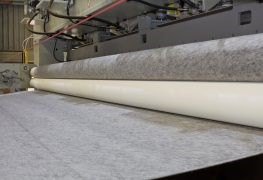
The application of the geotextile
Lightweight geotextiles (3.1 oz – 4.5 oz) can be used for drainage, landscaping, filter fabrics, asphalt overlay. Mediumweight geotextiles (6 oz – 8 oz) can be used for erosion control, stabilization, aggregate separation, drainage. While heavyweight geotextiles for road stabilization and geomembrane cushioning. Langgeng Jaya Fiberindo consistently produces geotextile to supply the demand in Indonesia because many government projects use it.
While many possible design methods or combinations of methods are available to the geotextile designer, please discuss with the project consultant/geotextile designer to find the most suitable procedure/design. The basic and common procedure to install geotextile for erosion control is:
- Area preparation. This will typically involve a process of removing trees and brush from the top layer of soil and vegetation from the subgrade materials. Weak pockets of soil should be replaced with granular fill.
- Smooth and level the subgrade. All depression or humps within the subgrade should be removed.
- Place the geotextile in the prepared installation area. The fabric should be stretched as tight and as flat as possible.
- Overlap adjacent rolls as specified for your site. Most common is the fabric overlapped at a minimum of 12-18 inches.
- Secure the fabric with staples, pins, soil, or other suitable materials. The fabric should be secured along the edges and then at overlapping portions.
- Loosely place fill/aggregate directly on the geotextiles in 8″ to 12″ lifts. For very weak subgrades/aggregate, 18″ or thicker may be required.
When installing a geotextile, the adjacent fabric can either be sewn or overlapped. The following is from the AASHTO and is general guidelines for determining when to sew and when to overlap
Soil CBR> 3 -Minimum overlap of 0.3 to 0.45 m
Soil CBR 1-3 -Minimum overlap of 0.6-1
Soil CBR< 0.5 – Must be sewn
DRAINAGE
- Grass Layer
- Ground Layer
- Geotextile
- Draining Gravel Layer
- Geotextile
- Underground
ROAD CONSTRUCTION
- Asphalt
- Draining Gravel Layer
- Ground Layer
- Geotextile

